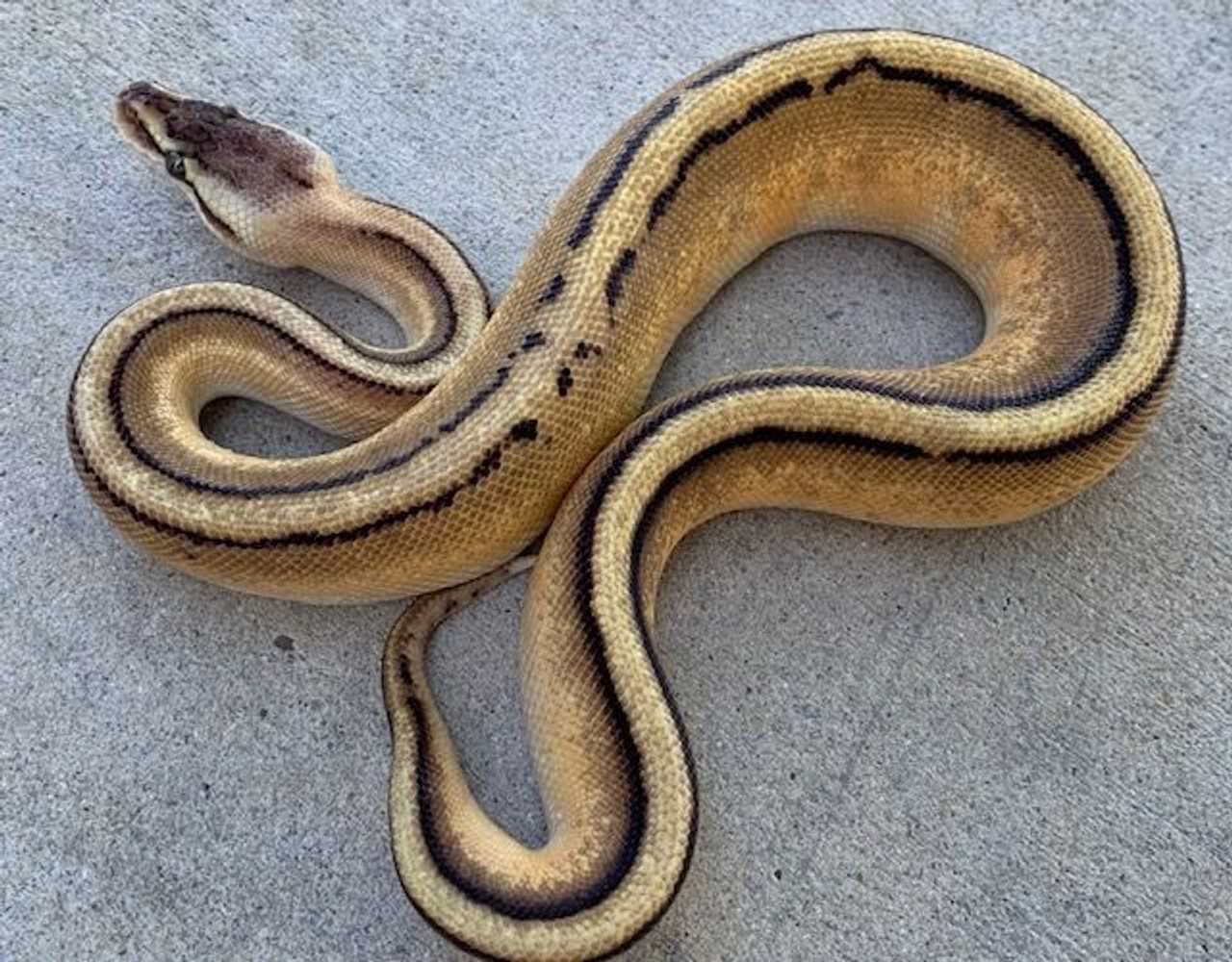
The G Stripe Ball Python is a rare and unique morph of the ball python species. It is known for its striking pattern, with bold stripes running down its body. The “G” in its name refers to the gene that is responsible for this distinctive pattern. These pythons are highly sought after by reptile enthusiasts and make a great addition to any collection.
Breeding G Stripe Ball Pythons can be a rewarding endeavor for experienced reptile breeders. The G Stripe gene can be co-dominant or incomplete dominant, meaning that breeding two G Stripes together can produce a variety of different patterns in the offspring. This variability makes breeding G Stripe Ball Pythons an exciting and potentially lucrative venture.
G Stripe Ball Python Morphs
The G Stripe morph is characterized by a thin, elongated stripe that runs along the back of the snake from head to tail. This stripe is typically a darker shade than the rest of the snake’s body, creating a striking contrast. In addition to the stripe, G Stripe ball pythons often exhibit vibrant colors and intricate patterns that can vary from snake to snake.
Origin and History
The G Stripe morph is a relatively new addition to the ball python world. It was first produced in the early 2000s by breeders who were experimenting with different genetic combinations. The exact origins of the morph are not well documented, but it is believed to be a result of combining genes from different ball python morphs.
Popular Varieties
There are several popular varieties of G Stripe ball pythons that have gained recognition and popularity among reptile enthusiasts. Some of these varieties include the Super G Stripe, which exhibits an intensified stripe and vibrant colors, and the Pastel G Stripe, which has a lighter background color and softer patterns.
Other popular varieties include the Mojave G Stripe, which combines the G Stripe morph with the Mojave morph to create a unique pattern and coloration, and the Lesser G Stripe, which combines the G Stripe with the Lesser morph for a more subdued look.
Color and Pattern Description
The color and pattern variations in G Stripe ball pythons can be quite diverse. The base coloration of the snake can range from shades of brown and tan to more vibrant hues of orange, yellow, and red. The G Stripe itself is usually a darker shade, often black or dark brown, and can vary in width and intensity.
The patterns on the snake’s body can be intricate and complex, with some G Stripe ball pythons exhibiting speckles or blotches along the sides, while others have a more uniform appearance. The exact color and pattern variations can vary depending on the individual snake’s genetic makeup.
| Variety | Description |
|---|---|
| Super G Stripe | Intensified stripe and vibrant colors |
| Pastel G Stripe | Lighter background color and softer patterns |
| Mojave G Stripe | Unique pattern and coloration with Mojave morph |
| Lesser G Stripe | Subdued look with Lesser morph |
G Stripe Ball Python Morphs: An Overview
The G Stripe Ball Python is a popular and unique morph of the ball python species. It is characterized by its distinct stripe pattern that runs along its body. This morph is known for its stunning coloration and pattern variation, making it highly sought after by snake enthusiasts and breeders.
The G Stripe Gene
The “G” in G Stripe stands for genetic, as this morph is the result of a genetic mutation. The G Stripe gene is a recessive trait, meaning that both parents must carry the gene in order to produce G Stripe offspring. When two G Stripe ball pythons are bred together, they have the potential to produce a clutch of G Stripe hatchlings.
Color and Pattern
The G Stripe Ball Python displays a variety of colors and patterns. The base color of the snake can range from a rich brown to a vibrant yellow, and can be accompanied by various shades of black and brown markings. The standout feature of this morph is the distinct stripe that runs from the head to the tail, giving the snake a unique and eye-catching appearance.
Care and Housing
Proper care and housing are essential for keeping G Stripe Ball Pythons healthy and thriving. They require a spacious enclosure with proper ventilation and temperature control. The enclosure should be equipped with hiding spots, a water bowl, and suitable substrate for the snake to burrow in. Regular cleaning and maintenance of the enclosure are necessary to ensure the snake’s well-being.
Feeding and Diet
Handling and Interaction
Breeding and Genetics
Conclusion
The G Stripe Ball Python is a captivating morph with its unique stripe pattern and beautiful coloration. Proper care, handling, and breeding practices are essential for the well-being and success of these snakes. Whether you are a snake enthusiast or a breeder, the G Stripe Ball Python is sure to be a fascinating addition to any collection.
G Stripe Ball Python Morphs: Origins and History
The G Stripe Ball Python is a popular morph of the ball python species (Python regius), known for its unique pattern and coloration. This morph is characterized by a prominent “G” shaped stripe along its dorsal area, which gives it its name. It is highly sought after by reptile enthusiasts and breeders for its distinctive appearance.
Origin
The G Stripe Ball Python morph is a relatively new addition to the ball python morph market. It was first discovered in the early 2000s in a clutch of normal ball pythons by a breeder named Greg Graziani. Recognizing its unique pattern, Graziani decided to isolate and breed this morph to create a distinct line of G Stripe Ball Pythons.
History
The exact genetic origins of the G Stripe Ball Python morph are still not fully understood. It is believed to be a recessive morph, meaning that it requires both parents to carry the gene in order for the offspring to display the phenotype. However, the specific genes responsible for the G Stripe pattern have yet to be identified.
Over the years, breeders have experimented with various breeding combinations to produce different variations of G Stripe Ball Pythons. These combinations include breeding G Stripe individuals together, as well as crossing them with other morphs to create even more unique and visually striking offspring.
| G Stripe Ball Python Morphs | Description |
|---|---|
| G Stripe Pastel Ball Python | This morph combines the G Stripe pattern with the Pastel morph, resulting in a snake with a light base color and enhanced stripe pattern. |
| G Stripe Mojave Ball Python | The Mojave morph adds a unique brownish hue to the G Stripe pattern, creating a striking contrast between the stripe and the base color. |
| G Stripe Pied Ball Python | This morph combines the G Stripe pattern with the Pied morph, resulting in a snake with a white and patterned appearance. |
| G Stripe Clown Ball Python | The Clown morph adds additional pattern distortions, resulting in a unique and visually striking snake with a highly distorted G Stripe pattern. |
The G Stripe Ball Python morphs have become highly collectible among reptile enthusiasts and breeders due to their unique appearance and potential for creating stunning and visually striking offspring. These morphs continue to evolve and captivate the reptile community, contributing to the ever-expanding world of ball python genetics.
G Stripe Ball Python Morphs: Popular Varieties
Introduction
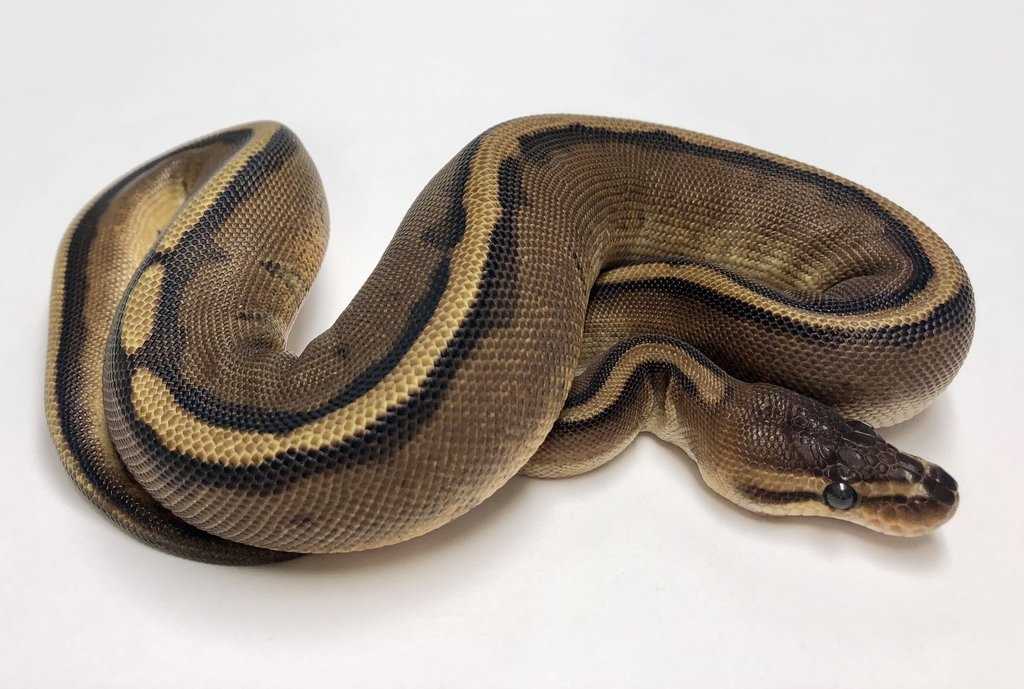
Jungle G
The Jungle G Stripe Ball Python is one of the most popular G Stripe morphs. It is characterized by its vibrant yellow coloration with dark brown, black, or gray stripes running along its body. The distinct contrast between the bright yellow and the dark stripes makes this morph visually stunning and highly sought after.
Genetic Stripe
The Genetic Stripe G Ball Python is another popular variety known for its striking appearance. It features a clean and crisp stripe pattern, with the stripes being wider and more pronounced compared to other G Stripe morphs. This morph often showcases a beautiful combination of bold colors, such as bright yellow, deep black, and rich brown.
Yellow Belly G
The Yellow Belly G Stripe Ball Python is a morph that exhibits a combination of the G Stripe pattern and the Yellow Belly gene. This gene enhances the overall brightness of the snake’s colors, resulting in a stunning display of vivid yellows and intense blacks. This eye-catching morph is highly sought after and is often considered a must-have for many collectors.
Pinstripe G
The Pinstripe G Stripe Ball Python is a morph that combines the G Stripe pattern with the Pinstripe gene. This gene creates a fascinating pattern of thin, elongated lines running along the snake’s body, resembling pins or stitches. When combined with the striking G Stripe pattern, the Pinstripe gene adds a unique and mesmerizing element to this morph.
Banana G
The Banana G Stripe Ball Python is a morph that is known for its vibrant yellow coloration and unique pattern. The combination of the yellow base color with the intense black and brown stripes creates a visually stunning contrast. This morph’s distinct appearance, combined with its docile nature, makes it a highly desired addition to any snake collection.
Conclusion
The G Stripe Ball Python has captivated snake enthusiasts with its wide variety of morphs. From the striking Jungle G to the unique Banana G, each morph offers its own distinct characteristics and visual appeal. Whether you are a seasoned reptile collector or a beginner, these popular G Stripe Ball Python varieties are sure to add beauty and intrigue to your collection.
G Stripe Ball Python Morphs: Color and Pattern Description
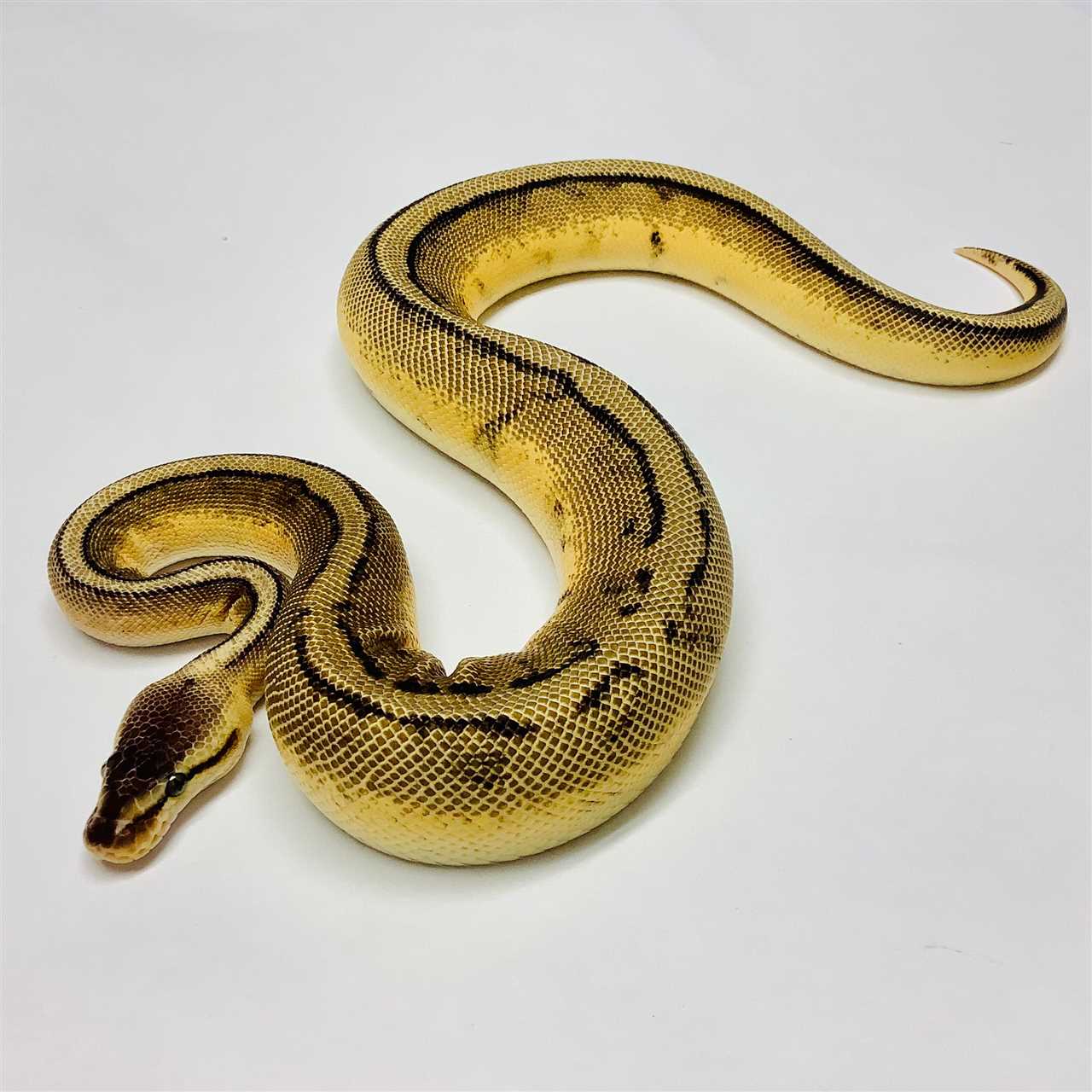
The G Stripe Ball Python is a fascinating morph known for its unique color and pattern variations. This morph is characterized by a prominent stripe down its back, which gives it its name. The stripe is typically a darker color than the rest of the snake’s body, providing a striking contrast.
In addition to the stripe, G Stripe Ball Pythons can exhibit various other patterns and colors. Some individuals may have a high contrast striped pattern, while others may have a more muted or broken stripe. The base color of these pythons can range from black to brown, with shades of gold, yellow, or orange. This wide range of color and pattern variations makes the G Stripe Ball Python a highly sought-after morph among reptile enthusiasts.
Striping Patterns
The stripe on a G Stripe Ball Python can vary in width and intensity. Some individuals may have a thin and well-defined stripe, while others may have a wider stripe that covers most of the back. The stripe can also be solid or broken, giving the snake a unique and irregular pattern. These variations in striping patterns contribute to the visual appeal of this morph.
Color Variations
The base color of the G Stripe Ball Python can vary greatly. Some individuals may have a predominantly black or dark brown coloration, while others may exhibit shades of lighter brown or even gold. The belly of these pythons is usually lighter in color, with cream or white scales. The head can also display unique color variations, with some individuals having a darker or lighter head compared to the rest of the body.
In addition to the base color, G Stripe Ball Pythons can display patches or speckles of different colors. These patches can be shades of gold, yellow, or orange, creating a visually appealing contrast against the darker background. The combination of these colors and patterns makes each G Stripe Ball Python unique and highly coveted by collectors and breeders.
Overall, the G Stripe Ball Python is a stunning morph with a range of color and pattern variations. Whether you prefer a bold and well-defined stripe or a more muted and broken pattern, this morph offers something for every reptile enthusiast. Its unique color combinations and striking appearance make it a standout addition to any collection.
G Stripe Ball Python Care
Proper care is essential for keeping your G Stripe Ball Python healthy and happy. These beautiful snakes require specific conditions to thrive, including appropriate housing, temperature and humidity levels, feeding and diet, and handling and interaction.
Housing and Enclosure
Temperature and Humidity
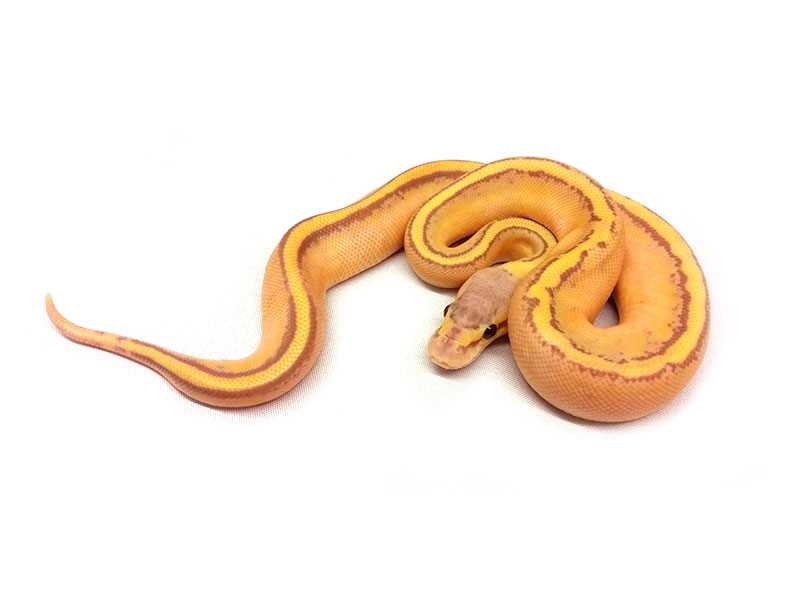
In terms of humidity, G Stripe Ball Pythons require a humidity level of around 50-60%. This can be achieved by misting the enclosure with water regularly and providing a water bowl for your snake to drink from and soak in.
Feeding and Diet
Handling and Interaction
Remember to always support your snake’s body and avoid grabbing it by the tail, as this can cause injury or stress. Wash your hands before and after handling your snake to prevent the spread of any potential bacteria.
G Stripe Ball Python Care: Housing and Enclosure
Temperature and Lighting
G Stripe Ball Pythons require a temperature gradient within their enclosure to thermoregulate. This can be achieved by installing a heat mat or under-tank heater on one side of the enclosure, with a thermostat to regulate the temperature. The warm side of the enclosure should be maintained at around 88-92°F (31-33°C) during the day, while the cool side should be around 78-82°F (25-28°C).
A suitable source of lighting, such as a reptile-specific UVB bulb, can also be provided. While G Stripe Ball Pythons are primarily nocturnal and do not require UVB lighting for vitamin D synthesis, a low-level UVB light can still benefit their overall health and well-being.
Hide Boxes and Enrichment
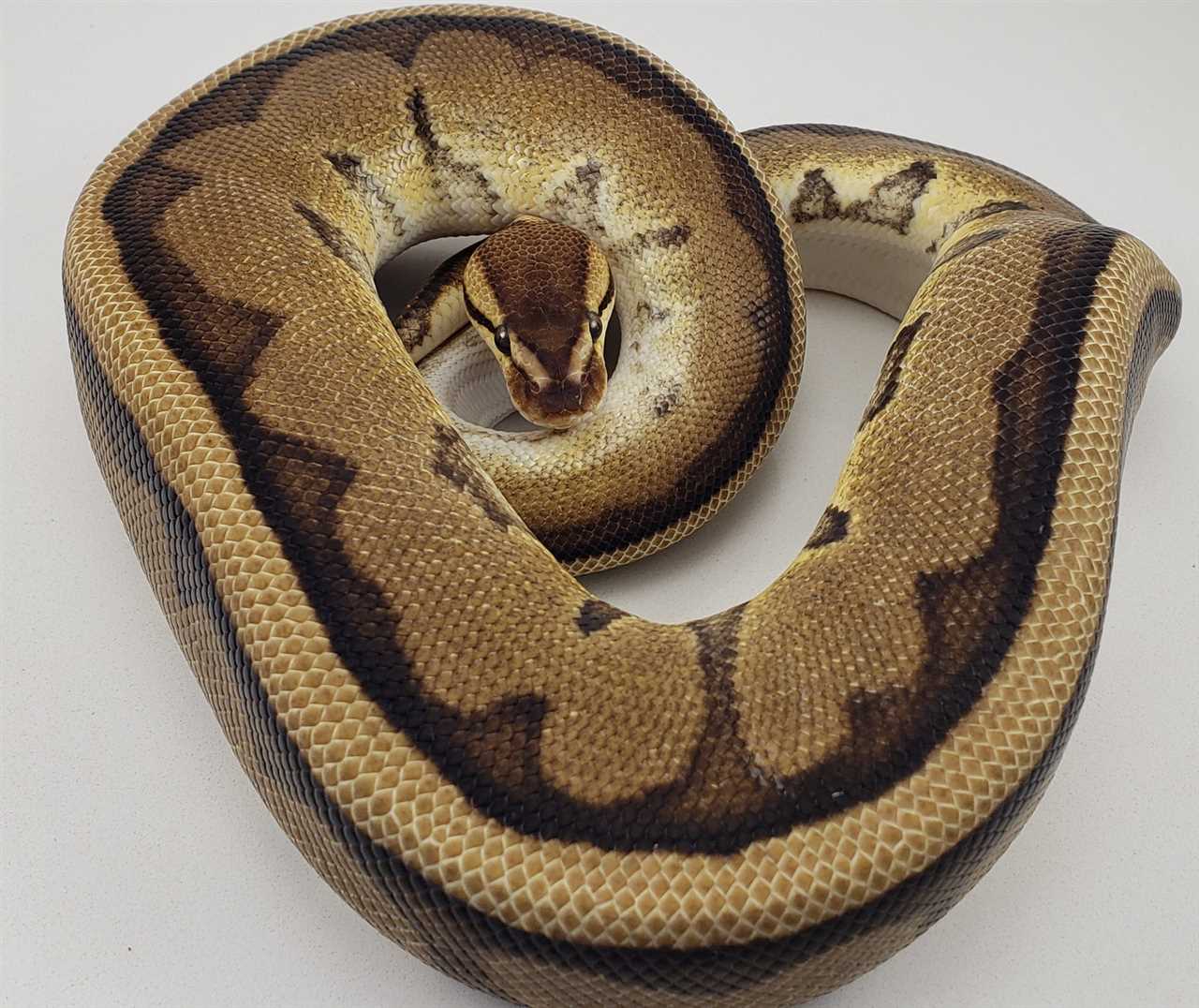
G Stripe Ball Pythons are secretive by nature and require hide boxes to feel secure and comfortable. It is recommended to provide at least two hide boxes in the enclosure, one on the warm side and one on the cool side.
These hide boxes can be made from various materials, such as plastic, wood, or even half logs. Make sure the hide boxes are appropriately sized to allow the snake to comfortably curl up inside.
In addition to hide boxes, you can also provide enrichment items such as branches, artificial plants, and climbing structures to encourage natural behaviors and provide stimulation for the snake.
Regular cleaning and maintenance of the enclosure are essential to ensure a clean and healthy environment for the G Stripe Ball Python. This includes spot cleaning feces or urates, changing the substrate regularly, and disinfecting the enclosure periodically.
By providing a suitable housing and enclosure with the right temperature, lighting, and enrichment, you can ensure the well-being and happiness of your G Stripe Ball Python.
G Stripe Ball Python Care: Temperature and Humidity
The ideal temperature range for G Stripe Ball Pythons is between 80-85 degrees Fahrenheit (26-29 degrees Celsius) during the day. At night, the temperature can drop a few degrees, but it should stay within the range of 75-80 degrees Fahrenheit (24-26 degrees Celsius).
In addition to temperature, humidity is also crucial for G Stripe Ball Pythons. The humidity level should be maintained at around 50-60%. This can be achieved by misting the enclosure with water daily or using a reptile-specific humidifier.
Adequate humidity is important for proper shedding, as it helps the snake to slough off its old skin easily. Insufficient humidity can result in retained eye caps or incomplete sheds, which can lead to health issues.
Regular monitoring of the temperature and humidity levels is crucial for the health of your G Stripe Ball Python. Fluctuations outside the recommended ranges can stress the snake and make them more susceptible to illness.
By providing the optimal temperature and humidity conditions, you can ensure that your G Stripe Ball Python thrives in captivity and remains healthy and happy.
G Stripe Ball Python Care: Feeding and Diet
Proper feeding and diet are essential for the health and well-being of G Stripe Ball Pythons. These snakes are carnivorous and primarily feed on small mammals in the wild. When kept in captivity, their diet should consist of appropriately sized rodents, such as mice or rats.
Feeding Schedule
Prey Size
Feeding Method
There are two common methods for feeding G Stripe Ball Pythons: live feeding and frozen-thawed feeding. Live feeding involves offering live prey to the snake, while frozen-thawed feeding involves thawing frozen rodents and offering them to the snake. Many snake owners prefer frozen-thawed feeding as it is safer for the snake and eliminates the risk of the prey injuring the snake during feeding.
When feeding live prey, it is essential to closely monitor the interaction between the snake and the prey to ensure the snake’s safety. If the snake does not immediately show interest in the prey, it is best to remove it from the enclosure to prevent any potential harm to the snake.
Feeding Tips
- Never handle or disturb your snake during feeding time, as it can cause them to regurgitate their meal.
- Provide a separate feeding enclosure to prevent substrate ingestion during feeding.
- Thaw frozen rodents in warm water before offering them to your snake, ensuring they are completely thawed and warm.
- If your snake refuses to eat, try offering a different type or size of prey, adjusting the temperature and humidity levels in the enclosure, or consulting a reptile veterinarian for further guidance.
Remember to always wash your hands thoroughly before and after handling your G Stripe Ball Python or their food to prevent the spread of bacteria.
G Stripe Ball Python Care: Handling and Interaction
Proper handling and interaction are essential for maintaining the overall health and well-being of your G Stripe Ball Python. Here are some important guidelines to follow:
Gentle Approach: When handling your G Stripe Ball Python, it is crucial to have a gentle and calm approach. Avoid sudden movements or loud noises that could startle the snake. This will help reduce stress and prevent the snake from feeling threatened.
Supporting the Body: When picking up your G Stripe Ball Python, it is best to support its entire body. Avoid gripping or squeezing the snake tightly, as this can cause injury or stress. Instead, use a gentle but firm grip around the snake’s midsection while supporting the weight of its body with your other hand.
Temperature and Lighting: Ensure that the room where you handle your G Stripe Ball Python is at the appropriate temperature and lighting conditions. Snakes are ectothermic animals, meaning they rely on external sources to regulate their body temperature. They should be kept in a warm and quiet environment to promote comfort and reduce stress.
Observing Body Language: Pay attention to the body language of your G Stripe Ball Python while handling. If the snake becomes tense, defensive, or starts flicking its tongue rapidly, it may be a sign of stress or discomfort. In such cases, it is best to gently place the snake back in its enclosure and allow it to calm down.
Avoid Overfeeding: Overfeeding your G Stripe Ball Python can lead to obesity and other health issues. Follow a proper feeding schedule and avoid handling the snake immediately after a meal to allow for proper digestion.
Supervision: When handling your G Stripe Ball Python, always supervise it closely. Never leave the snake unattended, especially around other pets or young children. This ensures the safety of both the snake and those around it.
By following these guidelines, you can create a positive and stress-free handling experience for both you and your G Stripe Ball Python.
G Stripe Ball Python Breeding
Breeding G Stripe Ball Pythons is a fascinating process that allows breeders to create unique and beautiful morphs. The “G” in G Stripe stands for “Genetic,” indicating that this morph is inherited through genetics.
The breeding process typically starts with introducing the female snake to the male’s enclosure. This can be done by placing the female in a separate enclosure adjacent to the male’s enclosure and allowing them to become familiar with each other’s scent. Once they have become familiar with each other, they can be introduced for mating.
After successful mating, the female G Stripe Ball Python will go through a gestation period of approximately 30 to 60 days before laying eggs. During this time, it’s crucial to provide the female with a suitable nesting area and maintain appropriate temperature and humidity levels.
Once the eggs are laid, they should be carefully collected and placed in an incubator set to the correct temperature and humidity for ball python eggs. The incubation period typically lasts around 60 to 80 days, after which the eggs will hatch, revealing the beautiful G Stripe Ball Python offspring.
G Stripe Ball Python Breeding: Mating and Egg Incubation
Mating
During the mating process, the female G Stripe Ball Python will typically show signs of receptiveness, such as increased activity and a willingness to interact with the male. The male will use his spurs to gently stimulate the female in order to initiate mating.
Egg Incubation
Overall, breeding G Stripe Ball Pythons can be a rewarding experience. By providing the proper care and environment for mating and egg incubation, you can increase your chances of successfully breeding these unique and beautiful snakes.

I’m Lena Adams—a product of an unconventional upbringing in the African wilderness. My father, a daring explorer of African wildlife, sparked my fascination with reptiles, a passion that intertwined with the tragic loss of my mother during an expedition, leaving an indelible mark on my life. Driven to understand the creatures that captivated my parents, I embarked on my journey, sharing insights about reptiles, frogs, and lizards on my website. Through my explorations and conservation efforts, I honour my family’s legacy while seeking connections—to the creatures, nature, and the mother whose presence I yearn to understand.
